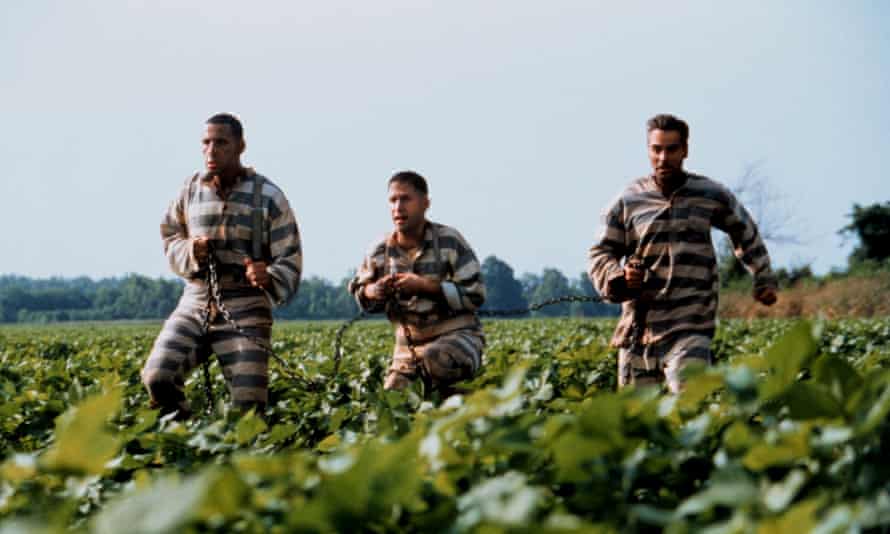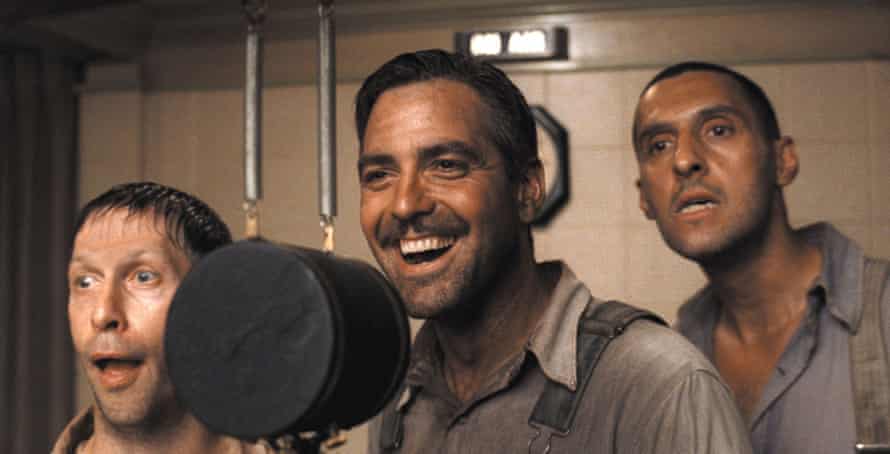What Happened to Tommy in Oh Brother Where Art Thou
A sking somebody to name their favourite Coen brothers movie is like pondering which Australian party is the nigh reprehensible – a conversational rabbit hole, with no possible chance of consensus. Quality-wise we are spoiled for option, with so many nuggets of gilt to pan from the Coen reserve. Is it the Hitchcockian cross-state thriller No Country for Old Men, the micturated-upon-on-my-rug stoner classic The Large Lebowski or is it the icy black comedy crime caper Fargo? Yah? Oh yah.
But in my mind the greatest Coen brothers movie is the semi-musical, semi-satirical, semi-historical, semi-mythological and completely brilliant comedy O Brother, Where Art Thou?, which turns 20 this year. Its narrative world exists very far from anywhere with the internet and memes, withal this absurdly entertaining and witty moving-picture show is and so damn memeable, loaded with snackable dialogue fans will instantly recognise.
Based in the corn fields, concert halls and on the open up roads of rural Mississippi during the Neat Depression, it is a ye olde take a chance sprinkled with delectably passé American turns of phrase such as "damn his eyes!" and "what in the Sam Loma?" A loose adaptation of Homer's The Odyssey, the film recasts the story of Odysseus's endeavour to return to his home island of Ithaca every bit a tale of three convicts, initially chained together, journey to detect a treasure that doesn't exist. Everett (George Clooney) is using the promise of riches to trick the 2 men he is chained to, Pete (John Turturro) and Delmar (Tim Blake Nelson), into helping him locate his estranged wife.
Pete and Delmar aren't exactly the sharpest tools in the shed, their nincompoopery a source of constant amusement when contrasted against Everett'due south great intellect, absurd silver tongue and self-appointed status every bit the group'south loftier-muck-a-muck.

Later on the trio bump into a blind soothsayer who accurately predicts that the journey alee of them will involve "a road fraught with peril" and an encounter with "a cow on the roof of a cotton wool house", they embark on a kind of vignette-filled tour of folkloric America. The Coens insert historical figures such equally Tommy Johnson (a blackness bluesman who claimed he sold his soul to the devil) and George "Babe Face" Nelson (a diminutive depository financial institution robber who partnered with John Dillinger), besides as fictitious figures cogitating of nighttime aspects of the American psyche – including John Goodman's trigger-happy, thieving bible salesman, and a pop politician (Wayne Duvall) who is a fellow member of the Ku Klux Klan.
The movie entangles history with mythology and spills over into magical realism. Music is used extensively, the era-specific and dazzlingly eclectic soundtrack selling over vii million copies in the United states lone, awakening America – in the words of this Guardian article – "to a musical heritage it had forgotten it owned". When Everett and co's ring, called The Soggy Lesser Boys, go to the radio shack or take to the stage to sing songs similar Human of Constant Sorrow the flick becomes, oh my lord, how to describe it? Eardrum candy? Yah, that'll do: eardrum candy. The O Brother soundtrack awoke many of u.s.a. to a musical heritage we never even knew we liked.

During an historic period in which the very concept of originality oft seems like a dusty relic from a distant era, O Brother, Where Are Thou? stands apart in its uniqueness; I defy everyone to name a film similar it. I dearest the film for the same reason Jacques Tati's Playtime is my favourite characteristic of all fourth dimension: it trades in a kind of filmmaking that never really existed. For Tati it was about space and architecture. Simply O Brother'due south singularity is harder to define – a combination of songs, history, mythology and comedy, mixing literature and theatricality with the language of music videos.
An absurdist time capsule of a period that sort of existed and sort of didn't, the film's intellectualism is inseparable from its willing comprehend of nonsense, further muddying the waters in the already unclear contend about what constitutes "high" versus "low" fine art. Here the Coens show a clever synergy with the picture show from which the title originates: the author/director Preston Sturges' brilliant 1941 picture show Sullivan's Travels, about a snobby film managing director who wants to make a highfalutin social realist drama (called O Brother, Where Art Thou??) before eventually embracing the value of light-headed escapism.
So much to honey; and then much to revere. And yet trying to make sense of O Blood brother, Where Art Thou? comes office-and-package with the sensation that 1 is being deliberately led down the garden path. Perhaps, as Everett himself puts it: "It'south a fool who looks for logic in the chambers of the human heart."
Source: https://www.theguardian.com/culture/2020/jun/19/o-brother-where-art-thou-revisiting-the-glory-and-silliness-of-the-coen-brothers-classic
0 Response to "What Happened to Tommy in Oh Brother Where Art Thou"
Post a Comment